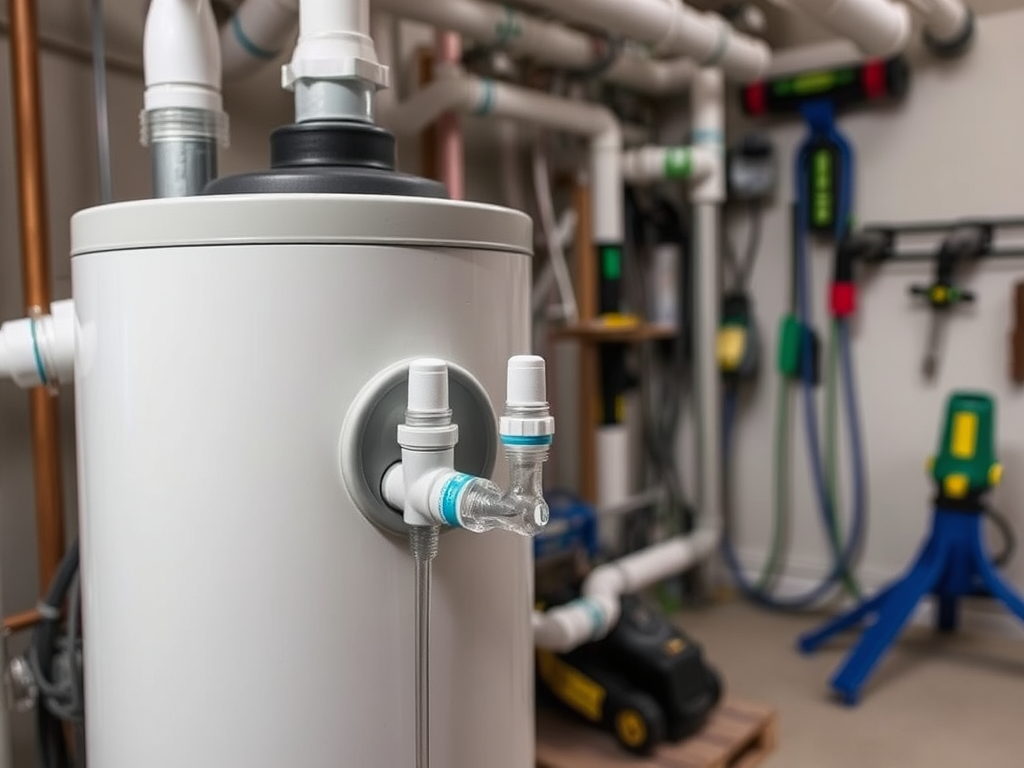Maintaining the perfect atmosphere in your home goes beyond ensuring it’s warm in the winter; it also means keeping moisture levels just right. Whole house humidifiers play a pivotal role in creating a comfortable living space where the air is not too dry. Dry air can lead to various issues, including dry skin, irritated sinuses, and damaged furniture. As winter sets in, understanding how to efficiently install and maintain these systems becomes a critical necessity. With the right knowledge, you can transform your home into a haven of comfort and wellness.
Choosing the right whole house humidifier is only the beginning. An effective installation ensures the system works efficiently, providing the intended benefits without unnecessary energy consumption. In this guide, you will find everything from the benefits of whole house humidifiers to detailed instructions on how to install one. Whether you’re a seasoned DIY enthusiast or looking to hire a professional, you’ll find valuable insights and tips to help you navigate the installation process smoothly.
Benefits of Whole House Humidifiers

Whole house humidifiers offer a myriad of advantages that go far beyond just comfort. By maintaining the right humidity levels, these systems help improve indoor air quality, which can be particularly beneficial for individuals with allergies or respiratory issues. Additionally, the presence of adequate moisture in the air can contribute to a more comfortable home environment, reducing feelings of dryness that many experience during cold months.
- Health Improvements: Maintaining optimal humidity can help reduce respiratory problems and discomfort.
- Comfort Levels: A well-humidified home feels more comfortable, allowing for lower temperature settings.
- Protection of Furnishings: The right humidity can prevent wood from cracking and preserve furnishings and musical instruments.
Types of Whole House Humidifiers

Understanding the different types of whole house humidifiers available can help you make an informed choice. Below, you’ll find an overview of the most common types, allowing you to evaluate which is best suited for your needs based on your home size and HVAC system compatibility.
| Type | Functionality | Ideal Use Case |
|---|---|---|
| Bypass Humidifiers | Uses the airflow from your HVAC system for evaporation. | Best for homes with existing forced-air systems. |
| Fan-Powered Humidifiers | Utilizes a built-in fan to distribute moisture throughout the home. | Good for larger homes requiring more humidity. |
| Steam Humidifiers | Heats water to produce steam, then distributes it with the HVAC. | Ideal for homes in extremely dry climates. |
Considerations Before Installation
Before diving into the installation process, several critical factors should be considered. Among these, the sizing and capacity of the humidifier play a vital role. Choosing the correct size ensures that your humidifier operates efficiently and meets your home’s specific needs. You’ll also need to consider your existing HVAC system to ascertain compatibility, as this can dictate the type of humidifier suitable for installation.
- Sizing and Capacity: Identify the right humidifier based on square footage and climate conditions.
- Existing HVAC System Compatibility: Verify that the selected humidifier can work seamlessly with your current setup.
- Maintenance Requirements: Understand the upkeep required for each type of humidifier to ensure effective performance.
Tools and Materials Needed for Installation
Equipping yourself with the right tools and materials is essential for a successful whole house humidifier installation. Having these items on hand will save you time and frustration during the process. Below is a list of necessary tools:
- Drill and drill bits
- Wrench set
- Screwdriver set
- Water supply line
- Duct tape
- Electrical tools
Step-by-Step Installation Process
The installation of a whole house humidifier involves several key steps, each equally important to achieve a functional and efficient setup. Let’s break down the process.
Preparing the Installation Site
Begin by selecting the ideal location for your humidifier. Ideally, it should be close to your HVAC system but not obstructing airflow. Ensure the site is level and accessible, allowing for easy maintenance in the future. This preparation sets the stage for a smoother installation process.
Connecting to the HVAC System
Next, connect your humidifier to the HVAC system. Ensure all connections are secure to prevent leaks. Follow the manufacturer’s guidelines closely to avoid errors that could lead to inefficiencies or damage.
Mounting the Humidifier
Carefully mount the humidifier according to the instructions provided. Use the necessary supports to ensure stability. This step is crucial for minimizing noise and vibration during operation, ultimately enhancing the system’s lifespan.
Electrical and Water Connections
Finally, make the electrical and plumbing connections to power your unit and supply water. Take care to check compliance with local building codes to ensure safety. After connections are made, it is wise to test the humidifier to confirm all systems are functioning correctly.
Maintenance Tips for Optimal Performance
To maximize the longevity and efficiency of your whole house humidifier, regular maintenance is essential. Clean your humidifier monthly to prevent mineral buildup, especially if you have hard water. Replacing filters as per the manufacturer’s schedule is also fundamental in maintaining air quality.
- Check water levels regularly to avoid overworking the unit.
- Inspect for leaks and repair immediately to prevent damage.
- Conduct a thorough cleaning at least once a year.
Conclusion
Installing a whole house humidifier is a proactive step towards ensuring a comfortable and healthy living environment. Proper installation and maintenance of these systems can profoundly affect your home’s air quality and your overall well-being. With the right knowledge and tools at your disposal, you’re well on your way to creating a cozy atmosphere that combats the harshness of dry winter air.
Frequently Asked Questions
- How does a whole house humidifier work?
A whole house humidifier integrates with your HVAC system to distribute moisture evenly throughout your home, maintaining optimal humidity levels. - Can I install a whole house humidifier myself?
While some may choose a DIY installation, it is often recommended to hire a professional to ensure proper connection to your HVAC system. - How often should I clean my humidifier?
It is advisable to clean your humidifier at least once a month during usage to prevent mineral buildup and ensure hygienic operation. - What humidity level is best for my home?
The ideal indoor humidity level typically falls between 30% and 50%, depending on personal comfort and health considerations. - Are whole house humidifiers energy efficient?
Yes, when used correctly, whole house humidifiers can be energy efficient and may even reduce heating costs by improving comfort levels.